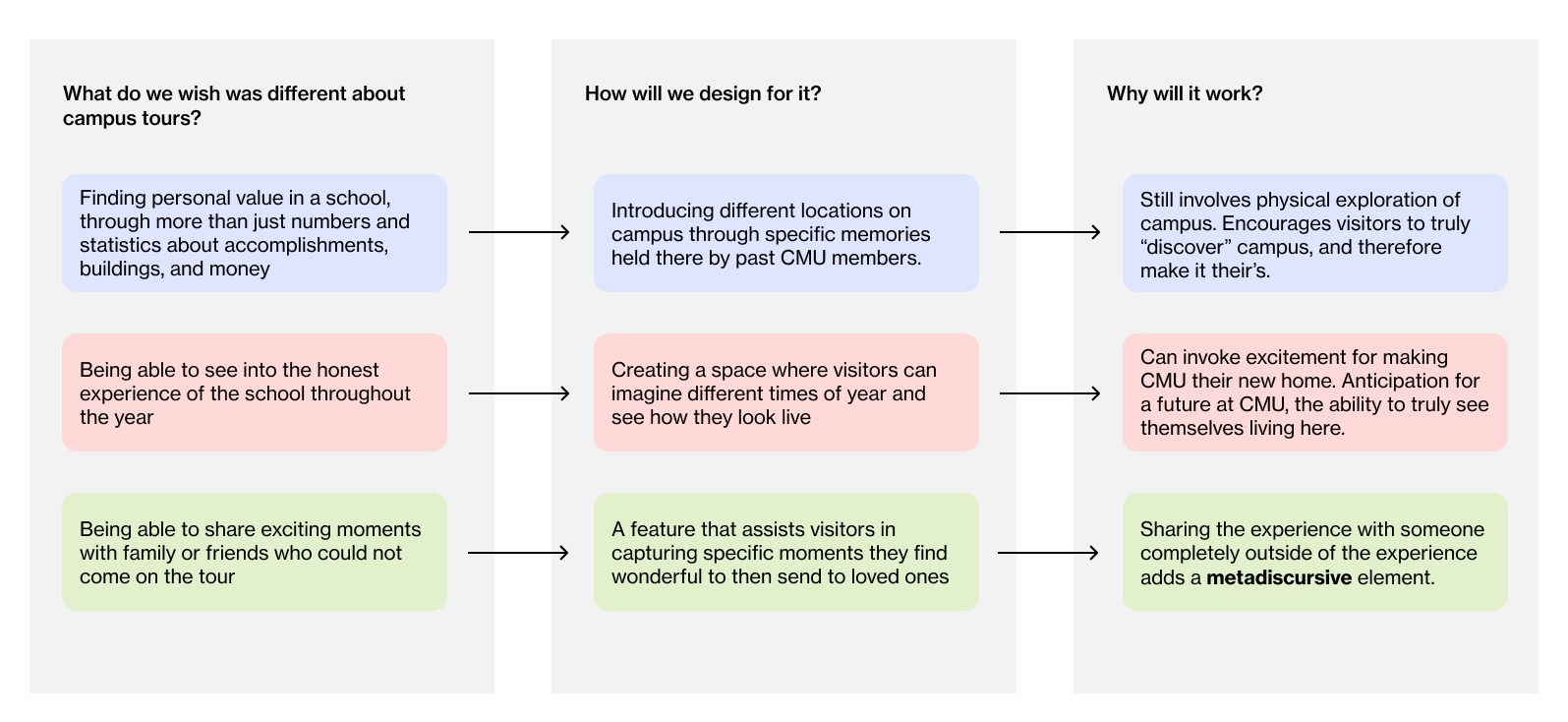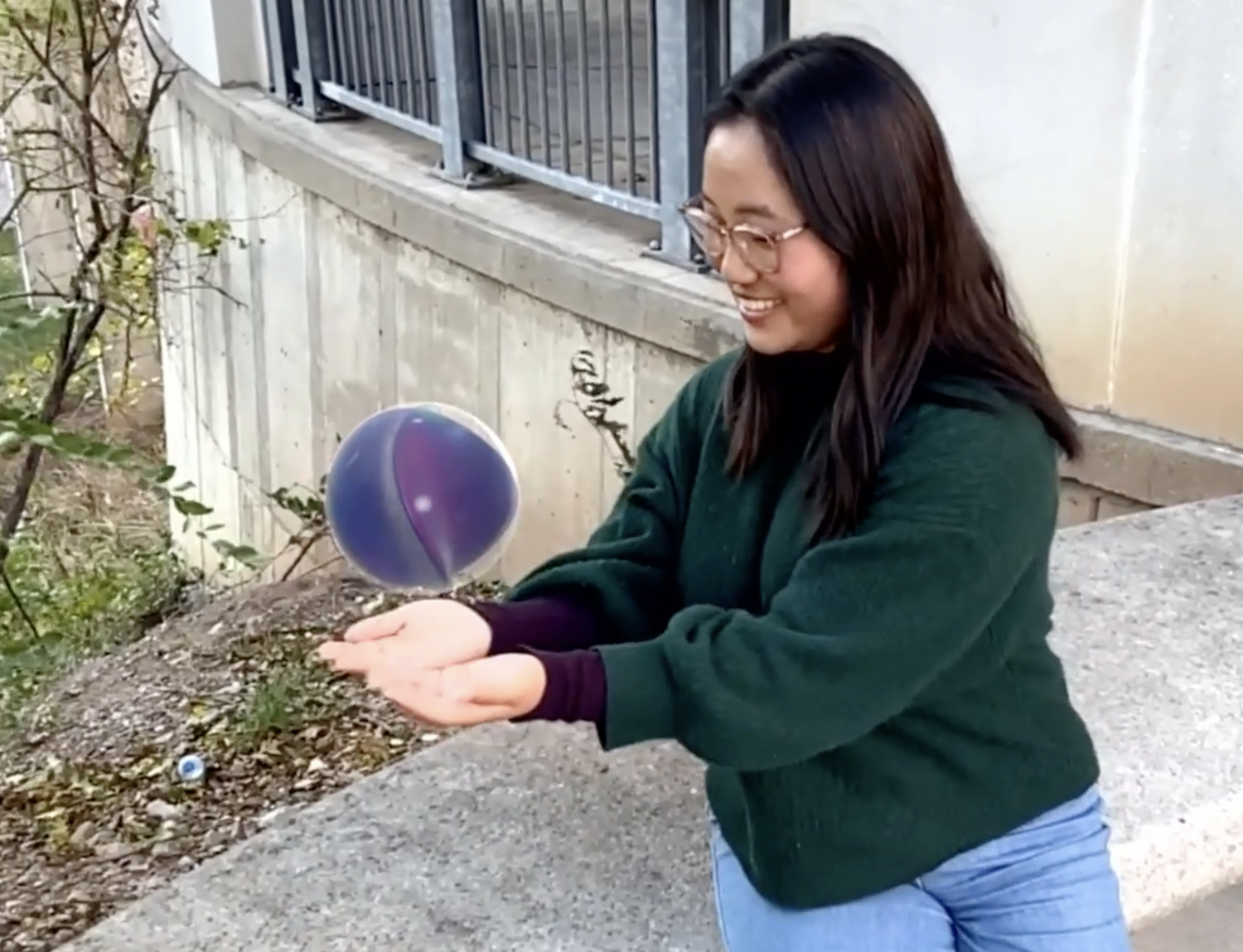Reimagining CMU Tours | Introducing Environments through Mixed Reality
GOAL
Create a campus tour for Carnegie Mellon University experienced through wearable technology ten years in the future. Design UI elements for mixed reality.
Speculating how both technology and society will change, analyze trajectories, and criticize the status quo around designing mixed reality experiences.
Create a campus tour for Carnegie Mellon University experienced through wearable technology ten years in the future. Design UI elements for mixed reality.
Speculating how both technology and society will change, analyze trajectories, and criticize the status quo around designing mixed reality experiences.
ABSTRACT
How can we augment reality as a means of bringing us closer to our physical, present realities? How can we design for a future where technology is not only non-disruptive, but greater connects people to their communities and physical environments? This project introduces a physical space through the memories and history, potential futures, and sharing of the place.
How can we augment reality as a means of bringing us closer to our physical, present realities? How can we design for a future where technology is not only non-disruptive, but greater connects people to their communities and physical environments? This project introduces a physical space through the memories and history, potential futures, and sharing of the place.
ENVIRONMENTS STUDIO: FORM & CONTEXT
Fall 2021
Fall 2021
duration
4 weeks
4 weeks
tools
Adobe AfterEffects
Adobe Aero
Reality Composer
Adobe AfterEffects
Adobe Aero
Reality Composer
PROBLEM SPACE

GUIDING CRITERIA
Ideal interactions in an augmented reality are ones that integrate as seamlessly as possible in the existing reality—augmenting reality in a way so that everyone still live and understand the same world as everyone else, rather than creating individual (and thus lonely) realities contained in a wearable.
This is done through designing elements to make sense both within and outside of the perspective of the technology. Interactions are live experiences with starts and finishes: with a visual cue, physical motion inciting it, and feedback. This micro experience should be as seamless as possible.
INTERACTIONS
[1] Memory Bubbles
Past/current CMU members leave stories of how they remember specific places on campus. The affordances and personal adaptations of physical spaces brings personality and attachment to them. It is playful and airy; the physical interaction feels natural to perform.

[2] See What Could Be
Fill in the blank of
“I wonder what a [ insert time of year ] at CMU feels like”.
“I wonder what a [ insert time of year ] at CMU feels like”.
A speaking element makes it so that there are “infinite” possibilities for what they can learn from the tour. This specific line blends in with reality; it would make sense to surrounding people if this was spoken aloud without prompt.

[3] “Would You Like to Send This to Grandma?”
In addition to being able to take snapshots throughout the tour of what is seen through the lens to look back at or share, the hololens is able to listen for moments that would be wonderful to share, and assists visitors in realizing and then sharing those moments live.
This interaction reduces cognitive load, as the visitor is not constantly thinking about the what makes a moment “important.”
The most special moments happen without us realizing it. This product becomes assistive though catching something that otherwise would’ve been missed.
It brings pleasure through being non-disruptive and revealing a capability of the technology as a surprise.

SPECULATIONS & VALUES
[1] Mixed reality interfaces should not rely heavily on tactile interactions.
[2] Move away from screen-based interactions, towards interactions in space.
[3] Generative communication = interactive responsiveness
[4] Interface elements within the wearable should feel natural on the eyesight.
[5] Assistive technologies must be considerate of privacy.
[2] Move away from screen-based interactions, towards interactions in space.
[3] Generative communication = interactive responsiveness
[4] Interface elements within the wearable should feel natural on the eyesight.
[5] Assistive technologies must be considerate of privacy.
THE DESIGNER’S LENS
A final acknowledgement with this project is a reflection on how a fully female design team influenced the goals, directions, and outcomes. Broken down and simplified, the key interactions were about [1] listening to others, [2] curiosity and self-discovery, and [3] sharing and connecting — all inherently feminine values. The worldview of designers has so much potential positive impact on their work, and influencing industries at large.